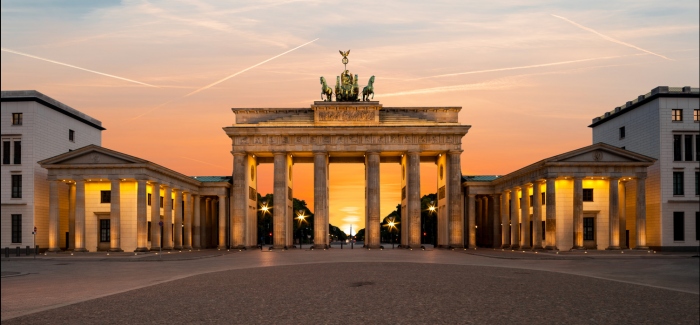Technische Universität München (TUM) and Ludwig-Maximilians - Universität München (LMU) are currently the two highest-ranked universities in Germany, according to the QS World University Rankings® 2018.
Both universities are likely to be popular with international students, offering highly prestigious education, which for all students will be free of charge. Both are also located in Munich, (München), a city known for its lively Bavarian culture, which was ranked ninth in the latest QS Best Student Cities index.
With so much in common, how should anyone wanting to study in Germany choose between these two universities? We decided to take a closer look at the key similarities and differences between TUM and LMU.
|
|
Technische Universität München (TUM) |
Ludwig-Maximilians - Universität München (LMU) |
|
QS World University Rankings® 2018 |
Ranked 67th in the world by academics and 25th by employers 88th for faculty/student ratio Ranked 401+ for research impact (citations per faculty member) Ranked 318th for percentage of international students and 299th for international faculty members |
Ranked 66th in the world Ranked 38th in the world by academics and 65th by employers
Ranked 194th for research impact (citations per faculty member)
|
|
Subject strengths* |
Unranked for arts & humanities Ranked joint 24th in the world for engineering & technology 81st for life sciences & medicine 18th for natural sciences Joint 155th for social sciences & management |
Ranked 56th in the world for arts & humanities Joint 150th for engineering & technology
Joint 75th for social sciences & management |
|
Location |
Made up of three campuses in the greater Munich area. Also runs campuses in Garching, Weihenstephan and a branch campus in Singapore (TUM Asia). |
Main campus is in the heart of Munich, and LMU also has a High-Tech Campus to the south of the city, which houses most of the natural and life science faculties. Also has sites in Oberschleißheim and Garching. |
|
Student community |
40,124 students were enrolled in 2016/17: 18,067 undergraduates; 18,396 master’s and doctoral students 9,661 (24%) of students are international |
51,025 students were enrolled in 2015/16 7,812 (15%) of these were international |
|
International tuition fees |
There are no tuition fees charged, but students must pay a compulsory semester fee of €128.50 (~US$150). Extra fees are charged for some continuing education programs. |
No tuition fees are charged, although students do need to pay a semester fee of €128.50. |
*Based on the broad subject areas of the QS World University Rankings by Subject 2017.
QS World University Rankings® 2018
TUM is ranked just two places above LMU in the latest QS World University Rankings, having fallen four places since last year. LMU will be hoping to overtake TUM in next year’s ranking, having climbed two places this year. Looking at the results in more depth (using the rankings indicators), LMU actually beats TUM in three of the six indicators used to compile the rankings, including its reputation among academics. However, TUM achieves a stronger score for its reputation among graduate employers.
The biggest differences between the two top universities in Germany are the scores for their research impact and faculty/student ratios. TUM is 401+ for citations per faculty member, a measure of an institution’s research impact, while LMU is ranked 194th, suggesting it might be the preferred choice if you value studying at a research-driven university. However, TUM has a much stronger ratio of faculty members to students, ranked 88th for this indicator while LMU is 334th.
Finally, when assessing the levels of international diversity on campus, both German universities are relatively equal – ranked within the top 400 for their percentages of international students (with TUM earning the higher score) and in the global top 300 for their percentages of international faculty members (with LMU earning a slightly higher score).
Subject strengths
The QS World University Rankings by Subject enables us to get a closer look at which subjects each of these top universities in Germany are particularly strong in. Unsurprisingly for a German institute of technology, TUM achieves a very high score for the broad subject area of engineering and technology (joint 24th), although it achieves its strongest score for natural sciences (18th). LMU achieves a position within the global top 150 of all five broad subject areas, again earning its highest score for natural sciences (joint 32nd), suggesting there’s very little to choose between the two universities if you’re studying a natural sciences subject. The table below shows how TUM and LMU directly compare for all of the 46 subjects covered in the ranking.
|
Technische Universität München (TUM) and Ludwig-Maximilians - Universität München (LMU) in the QS World University Rankings by Subject 2017 |
||
|
|
TUM |
LMU |
|
Accounting & finance |
101-150 |
-- |
|
Agriculture & forestry |
51-100 |
-- |
|
Anatomy & physiology |
-- |
33rd |
|
Archaeology |
-- |
51-100 |
|
Architecture |
=29th |
-- |
|
Biological sciences |
51-100 |
36th |
|
Business & management |
101-150 |
101-150 |
|
Chemistry |
25th |
51-100 |
|
Communication & media studies |
-- |
51-100 |
|
Computer science & information systems |
40th |
51-100 |
|
Earth & marine sciences |
101-150 |
51-100 |
|
Economics |
-- |
51-100 |
|
Education & training |
-- |
101-150 |
|
Engineering (chemical) |
51-100 |
-- |
|
Engineering (civil) |
=48th |
-- |
|
Engineering (electrical) |
41st |
-- |
|
Engineering (mechanical) |
35th |
-- |
|
Environmental sciences |
101-150 |
201-250 |
|
Geography |
-- |
101-150 |
|
History |
-- |
50th |
|
Law |
-- |
=40th |
|
Linguistics |
-- |
101-150 |
|
Materials science |
51-100 |
101-150 |
|
Mathematics |
51-100 |
51-100 |
|
Medicine |
51-100 |
45th |
|
Modern languages |
-- |
51-100 |
|
Performing arts |
-- |
51-100 |
|
Pharmacy |
101-150 |
=31st |
|
Philosophy |
-- |
12th |
|
Physics & astronomy |
=19th |
=16th |
|
Politics |
-- |
51-100 |
|
Psychology |
-- |
51-100 |
|
Sociology |
251-300 |
51-100 |
|
Statistics |
-- |
51-100 |
|
Theology, divinity & religious studies |
-- |
41st |
|
Veterinary science |
-- |
=25th |
Location
Technische Universität München and Ludwig-Maximilians-Universität München both have their main campuses in the center of Munich, with further campuses and buildings elsewhere in Bavaria (and beyond, in the case of TUM, which runs a satellite campus in Singapore: TUM Asia). TUM also owns the Rechts der Isar university hospital, which is considered one of the best hospitals in the region. TUM’s largest location is actually its campus in Garching, a small city located 20km (12.4 miles) to the north, which hosts more than 12,000 students in five faculties, and also has a number of research centers. The Garching campus is easily accessible to Munich via a Metro line, making day trips easy.
Towards the southeast of Munich, in the adjacent districts of Großhadern and Martinsried, LMU’s High-Tech Campus is located, hosting the majority of the university’s natural and life sciences. This includes the Klinikum Großhadern, the largest hospital complex in Munich. More LMU buildings are found in Oberschleißheim and Garching, with the former hosting the university’s faculty of veterinary medicine.
Munich itself has been ranked ninth in the latest QS Best Student Cities index, receiving its highest scores for Desirability and Employer Activity (two of the categories used to compile the ranking). It’s known for its proud, characteristic Bavarian culture, and should be ideal for those who like beer (the famous Oktoberfest beer festival attracts over six million visitors every year). Munich has been rated one of the most expensive cities in Germany to live in, but nonetheless receives a high score for affordability, thanks to tuition fees being either low or non-existent.
Student community
TUM and LMU are both large universities, with LMU hosting the larger number at 51,000. TUM has a fairly equal number of undergraduates to postgraduates, and achieves a higher score than LMU for its percentage of international students, with around 24% of TUM’s students coming from outside Germany, while the percentage at LMU is 15%.
Tuition fees and funding
If you’re interested in studying at either of these top German universities, there’s good news: at the time of writing, both universities do not charge tuition fees to students of all study levels and nationalities, although TUM charge extra fees for some continuing education programs.
You will only need to pay a compulsory semester fee of €128.50 (~US$150) at both universities, which covers the basic student union fee of €62 (~US$72) and the basic semester ticket of €66.50 (~US$77), which allows you to use the entire Munich public transport network at evenings and weekends. There’s also an optional semester ticket, the IsarCard semester, which gives you unlimited travel on the network at any time. This costs €193 (~US$220).
Tuition fees will be reintroduced in autumn 2017 for non-EU students at universities in Baden-Württemberg, a neighboring state to Bavaria, and it’s possible that other German states will follow in the coming years.
Although there are currently no tuition fees, both TUM and LUM offer scholarships and other funding opportunities to help students fund their education. TUM, for example, offers scholarships for international students on behalf of the Bavarian government, which are awarded to currently-enrolled students at both undergraduate and graduate level. The amount awarded is between €500 and €1,500 (~US$580-1,750) per semester, and students must show both academic merit and proof of financial need. Other scholarships offered by TUM include the Nicolaus Scholarship Fund and the Loschge Scholarship, for thermal engineering students.
Scholarships at LMU include the LMU Study Scholarship, also funded by the Bavarian government, which is aimed at international and doctoral students. To be eligible, students need to demonstrate academic excellence, knowledge in your field of study, and financial need. The scholarship awards €650 (~US$750) per month for four months. The university also offers scholarships for third-year bachelor and master students, and the Study Completion Scholarship, which is for international and doctoral students with a history of academic excellence.
You may also be eligible to apply for external scholarships offered by the German government or other organizations. One such option is the Deutschlandstipendium, which awards talented international students a grant of €300 per month (~US$350) and does not consider your personal income or nationality. You can browse more scholarships to study in Germany here.
Which of these top universities in Germany would you choose? Tell us in the comments below, and let us know which universities you’d like to see compared next!












